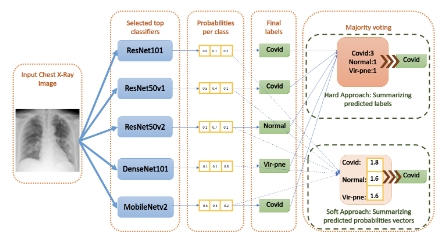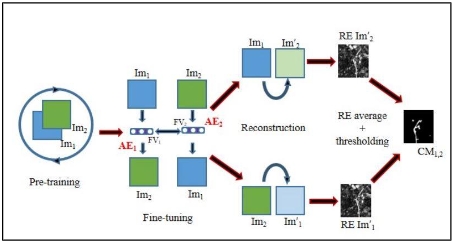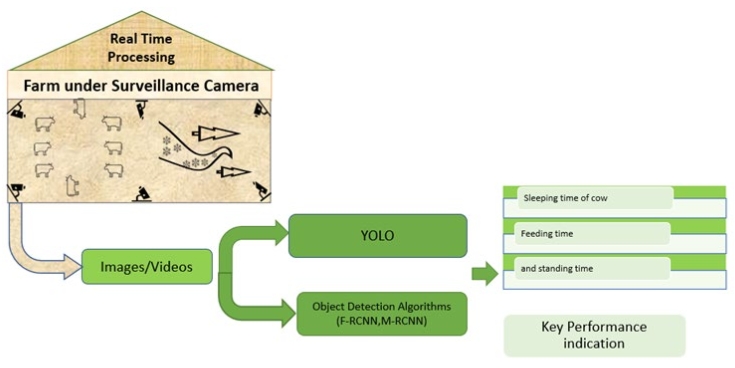Identifying voices using convolution neural network models AlexNet and ResNet
Abstract
Deep learning (DL) techniques which implement deep neural networks became popular due to the increase of high-performance computing facilities. DL achieves higher power and flexibility due to its ability to process many features when it deals with unstructured data. DL algorithm passes the data through several layers; each layer is capable of extracting features progressively and passes it to the next layer. Initial layers extract low-level features, and succeeding layers combine features to form a complete representation. This research attempts to utilize DL techniques for identifying sounds. The development in DL models has extensively covered classification and verification of objects through images. However, there have not been any notable findings concerning identification and verification of the voice of an individual from different other individuals using DL techniques. Hence, the proposed research aims to develop DL techniques capable of isolating the voice of an individual from a group of other sounds and classify them based on the use of convolutional neural networks models AlexNet and ResNet, that are used in voice identification. We achieved the classification accuracy of ResNet and AlexNet model for the problem of voice identification is 97.2039 % and 65.95% respectively, in which ResNet model achieves the best result.
References
[1]Bae HS, Lee HJ, Lee SG. Voice recognition based on adaptive MFCC and deep learning. In 2016 IEEE 11th Conference on Industrial Electronics and Applications (ICIEA). 2016. pp. 1542-1546. doi: 10.1109/ICIEA.2016.7603830
[2]Zhou R, Liu F, Gravelle CW. Deep Learning for Modulation Recognition: A Survey With a Demonstration. IEEE Access. 2020, 8: 67366-67376. doi: 10.1109/access.2020.2986330
[3]Deng L, Liu Y. Deep Learning in Natural Language Processing. Springer Singapore, 2018. doi: 10.1007/978-981-10-5209-5
[4]Deng L, Hinton G, Kingsbury B. New types of deep neural network learning for speech recognition and related applications: an overview. 2013 IEEE International Conference on Acoustics, Speech and Signal Processing. Published online May 2013. doi: 10.1109/icassp.2013.6639344
[5]Terzopoulos G, Satratzemi M. Voice Assistants and Smart Speakers in Everyday Life and in Education. Informatics in Education. Published online September 16, 2020: 473-490. doi: 10.15388/infedu.2020.21
[6]Nguyen G, Dlugolinsky S, Bobák M, et al. Machine Learning and Deep Learning frameworks and libraries for large-scale data mining: a survey. Artificial Intelligence Review. 2019, 52(1): 77-124. doi: 10.1007/s10462-018-09679-z
[7]Lee JG, Jun S, Cho YW, et al. Deep Learning in Medical Imaging: General Overview. Korean Journal of Radiology. 2017, 18(4): 570. doi: 10.3348/kjr.2017.18.4.570
[8]Fayek HM, Lech M, Cavedon L. Evaluating deep learning architectures for Speech Emotion Recognition. Neural Networks. 2017, 92: 60-68. doi: 10.1016/j.neunet.2017.02.013
[9]Bashar A. Survey on evolving deep learning neural network architectures. Journal of Artificial Intelligence and Capsule Networks. 2019, 2019(2): 73-82. doi: 10.36548/jaicn.2019.2.003
[10]Khalil RA, Jones E, Babar MI, et al. Speech Emotion Recognition Using Deep Learning Techniques: A Review. IEEE Access. 2019, 7: 117327-117345. doi: 10.1109/access.2019.2936124
[11]Zhang Y, Pezeshki M, Brakel P, et al. Towards End-to-End Speech Recognition with Deep Convolutional Neural Networks. Interspeech 2016. Published online September 8, 2016. doi: 10.21437/interspeech.2016-1446
[12]Lemley J, Bazrafkan S, Corcoran P. Deep Learning for Consumer Devices and Services: Pushing the limits for machine learning, artificial intelligence, and computer vision. IEEE Consumer Electronics Magazine. 2017, 6(2): 48-56. doi: 10.1109/mce.2016.2640698
[13]Parcollet T, Zhang Y, Morchid M, et al. Quaternion Convolutional Neural Networks for End-to-End Automatic Speech Recognition. Interspeech 2018. Published online September 2, 2018. doi: 10.21437/interspeech.2018-1898
[14]Zhang Z. Improved Adam Optimizer for Deep Neural Networks. 2018 IEEE/ACM 26th International Symposium on Quality of Service (IWQoS). Published online June 2018. doi: 10.1109/iwqos.2018.8624183
[15]ShabanAl-Ani M, M. Al-Aloosi W. Biometrics Fingerprint Recognition using Discrete Cosine Transform (DCT). International Journal of Computer Applications. 2013, 69(6): 44-48. doi: 10.5120/11849-7598
[16]Krizhevsky A, Sutskever I, Hinton GE. ImageNet classification with deep convolutional neural networks. Communications of the ACM. 2017, 60(6): 84-90. doi: 10.1145/3065386
[17]Andrew. Nuts and bolts of building AI applications using Deep Learning. NIPS Keynote Talk. 2016.
[18]Malik M, Adavanne S, Drossos K, et al. Stacked convolutional and recurrent neural networks for music emotion recognition. 2017.
[19]Pons J, Slizovskaia O, Gong R, et al. Timbre analysis of music audio signals with convolutional neural networks. In: Proceedings of the 2017 25th European Signal Processing Conference (EUSIPCO) IEEE. pp. 2744-2748.
[20]Bunrit S, Inkian T, Kerdprasop N, et al. Text-Independent Speaker Identification Using Deep Learning Model of Convolution Neural Network. International Journal of Machine Learning and Computing. 2019, 9(2): 143-148. doi: 10.18178/ijmlc.2019.9.2.778
[21]Heaven D. Why deep-learning AIs are so easy to fool. Nature. 2019, 574(7777): 163-166. doi: 10.1038/d41586-019-03013-5
[22]Taylor GR. Integrating quantitative and qualitative methods in research. University press of America. 2005, doi: 10.4236/psych.2020.115053
[23]McEvoy P, Richards D. A critical realist rationale for using a combination of quantitative and qualitative methods. Journal of Research in Nursing. 2006, 11(1): 66-78. doi: 10.1177/1744987106060192
[24]Open Speech and Language Resources. OpenSLR (Version 1) [Dev-clean]. Available online: http://www.openslr.org/12/ (accessed on 7 September 2023).
[25]Nasr MA, Abd-Elnaby M, El-Fishawy AS, et al. Speaker identification based on normalized pitch frequency and Mel Frequency Cepstral Coefficients. International Journal of Speech Technology. 2018, 21(4): 941-951. doi: 10.1007/s10772-018-9524-7
[26]Hossin M, M.N S. A Review on Evaluation Metrics for Data Classification Evaluations. International Journal of Data Mining & Knowledge Management Process. 2015, 5(2): 3-5. doi: 10.5121/ijdkp.2015.5201
[27]Han J, Gondro C, Reid K, et al. Heuristic hyperparameter optimization of deep learning models for genomic prediction. De Koning DJ, ed. G3 Genes|Genomes|Genetics. 2021, 11(7). doi: 10.1093/g3journal/jkab032
[28]Mamyrbayev O, Mekebayev N, Turdalyuly M, et al. Voice Identification Using Classification Algorithms. Intelligent System and Computing. Published online April 29, 2020. doi: 10.5772/intechopen.88239
Copyright (c) 2024 Abdulaziz Alhowaish Luluh, Muniasamy Anandhavalli

This work is licensed under a Creative Commons Attribution 4.0 International License.










